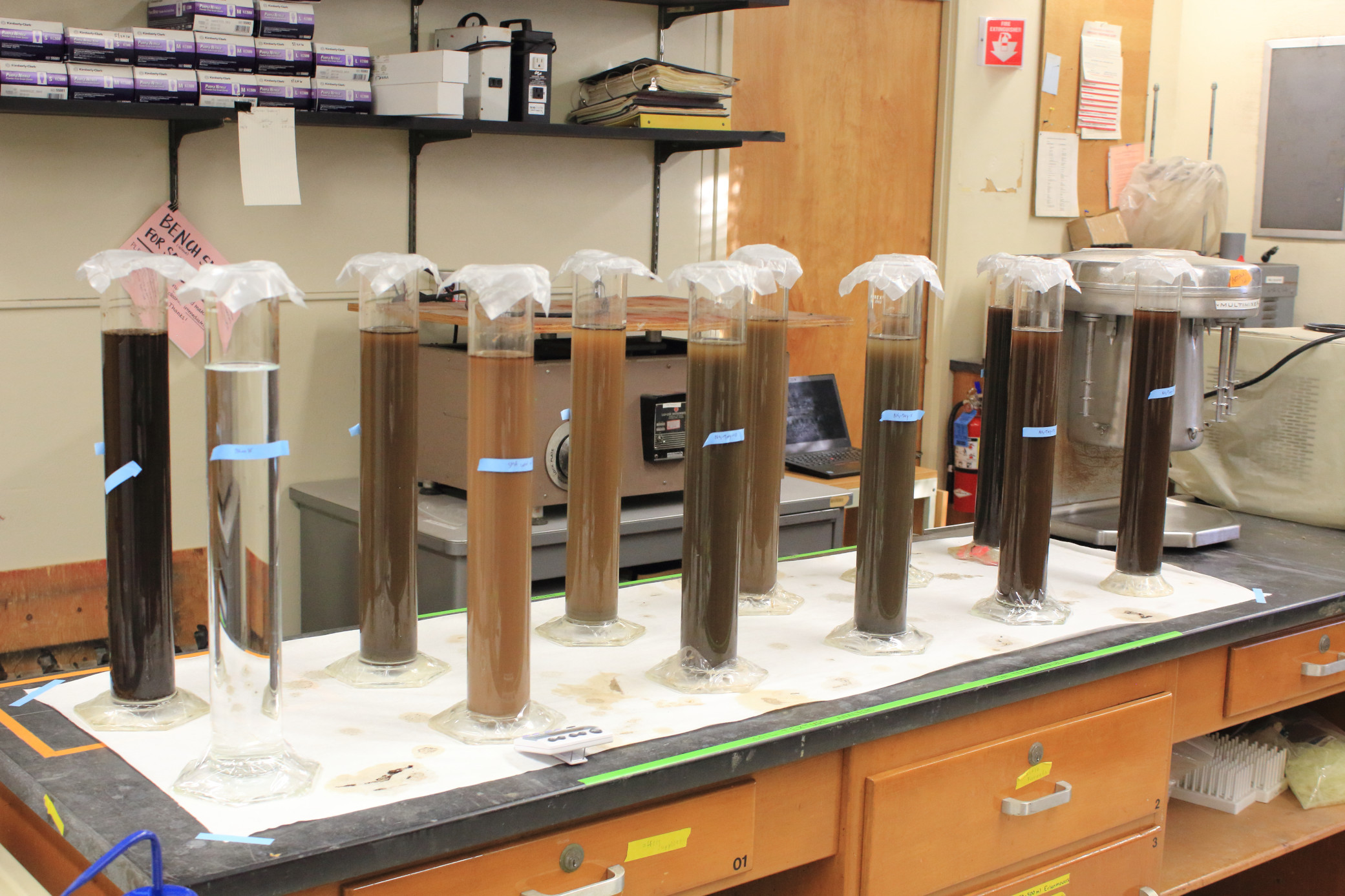Dan Measuring Soil Texture of Troy Soils
Today, Dan started a set of experiments to determine the soil texture (percentage of sand, silt, and clay) of the Troy soil samples. Sand, silt, and clay are the main nonliving solid components of soils. The primary difference between sand, silt, and clay particles is their size. The Soil Science Society of America created the graphic below to demonstrate the relative size of sand (largest), silt (middle), and clay (smallest) particles:

Soil texture is a common way to classify soils. It is also relevant for human health if the soil contains lead or other metals. Smaller particles are more likely to stick to our hands when we touch soil, and they are also more likely to be kicked up as dust in the air.
One way to measure soil texture is with a sedimentation experiment. Individual soil particles settle in water at different speeds based on their size. By mixing a soil sample in a column of water and then measuring how it settles over time, the particle sizes in the soil can be calculated. Below is a picture of the sedimentation columns from one set of experiments with the Troy soils:

Another way to measure soil texture is by feel. The USDA created a flow chart so that texture could be determined through a series of steps where soils are rubbed between your fingers. The flow chart can be found here.